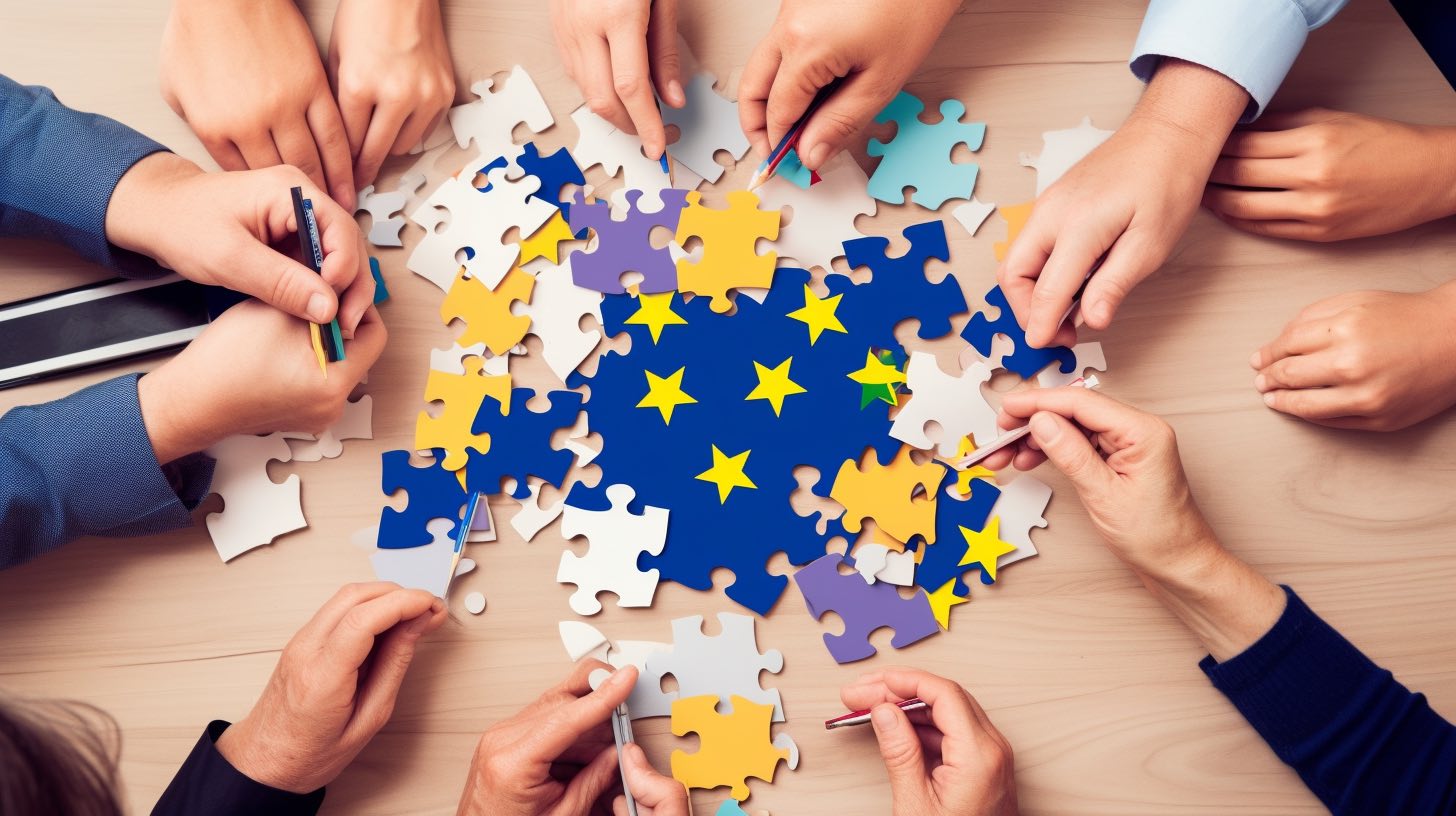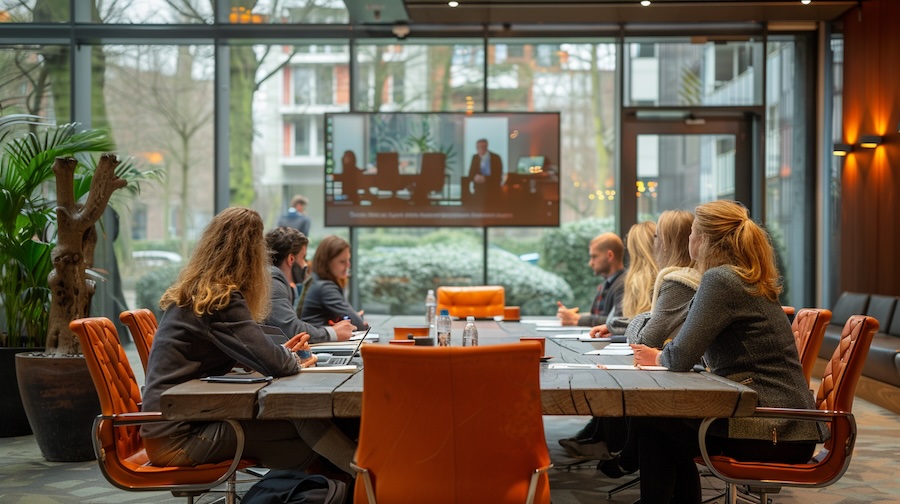In this post “Innovative KA2 Project Ideas: An Erasmus+ Comprehensive Guide”, I focus on how to create ideas for your projects, how to prepare preliminary document before you begin to write the project. The document will help you a lot, ease you job, provide consistency while you are writing your KA2 project. Therefore, it is not a training how to write a KA2 projects, it is about the preliminary work which will be your sidekick in the proposing stage. During this procedure you will need Erasmus+ Programme Guide (it is 2023 version,) our word file, and creating an idea that fits the Erasmus+ horizontal and field specific priorities. Meanwhile, if you would like to learn more about our company, please check the L4Y Learning for Youth introduction post. Also, you can check our more simple project writing opportunity of KA1 – Project Writing Course
Table of Contents
- Introduction
- Identifying Your Focus Area
- Conducting Research to Understand Needs and Challenges
- Building Strong Partnerships for Success
- Identify prospective partners
- Assess compatibility
- Establish clear communication
- Define roles and responsibilities
- Create a partnership contract
- Build personal connections
- Encourage participation
- Monitor progress and provide feedback
- Celebrate successes and learn from challenges
- Maintain the partnership beyond the project’s scope
- Developing Clear and Achievable Project Objectives
- Designing Innovative Solutions for Erasmus+ KA2 Projects
- Planning Activities to Achieve Project Goals
- Defining Expected Outcomes and Impact
- Conclusion: Tips for a Successful Erasmus+ KA2 Project
- Align with Erasmus+ objectives and priorities
- Foster strong collaboration among partners
- Set realistic goals and expectations
- Involve target groups and stakeholders
- Focus on sustainability
- Monitor progress and adapt
- Emphasise quality over quantity
- Ensure effective communication
- Document and share experiences
- Celebrate your successes
Introduction to Erasmus+ KA2 Projects
Erasmus+ is the EU Programme in the fields of education, training, youth and sport for the period 2021-2027.
2023 Erasmus+ Programme Guide (Page: 4)
Education, training, youth and sport are key areas that support citizens in their personal and professional development.
High quality, inclusive education and training, as well as informal and non-formal learning, ultimately equip young
people and participants of all ages with the qualifications and skills needed for their meaningful participation in
democratic society, intercultural understanding and successful transition in the labour market. Building on the success
of the programme in the period 2014-2020, Erasmus+ strengthens its efforts to increase the opportunities offered to
more participants and to a wider range of organisations, focusing on its qualitative impact and contributing to more
inclusive and cohesive, greener and digitally fit societies.
Firstly, it is a general description of Erasmus+ programme. Secondly, we concern KEY ACTION 2: COOPERATION AMONG ORGANISATIONS AND INSTITUTIONS part. Lastly, for more information refer to 2023 Erasmus+ Programme Guide (Page: 213)
Innovative KA2 Project Ideas: Identifying Your Focus Area in the Erasmus+ Program
The Erasmus+ “KA2-Partnerships for Cooperation” Program in education, training, and youth. To determine your KA2 focus area, follow these steps:
Understand the program objectives
The objective of KA2 is to enhance European education, training, and youth activity while fostering international cooperation. Therefore, you need to become acquainted with the program’s goals and priorities.
GENERAL OBJECTIVE
The general objective of the Programme is to support, through lifelong learning, the educational, professional and
personal development of people in education, training, youth and sport, in Europe and beyond, thereby contributing to
sustainable growth, quality jobs and social cohesion, to driving innovation, and to strengthening European identity and
active citizenship. As such, the Programme shall be a key instrument for building a European Education Area,
supporting the implementation of the European strategic cooperation in the field of education and training, with its
underlying sectoral agendas. In addition, it is key in advancing youth policy cooperation under the European Union
Youth Strategy 2019-2027 and developing the European dimension in sport.
SPECIFIC OBJECTIVES
The Programme has the following specific objectives:2023 Erasmus+ Programme Guide (Page: 6)
- promote learning mobility of individuals and groups, as well as cooperation, quality, inclusion and equity,
excellence, creativity and innovation at the level of organisations and policies in the field of education and
training;- promote non-formal and informal learning mobility and active participation among young people, as well as
cooperation, quality, inclusion, creativity and innovation at the level of organisations and policies in the field of
youth;- promote learning mobility of sport staff, as well as cooperation, quality, inclusion, creativity and innovation at
the level of sport organisations and sport policies
KA2 – Cooperation Partnerships aim at:
2023 Erasmus+ Programme Guide (Page: 226)
- Increasing quality in the work, activities and practices of organisations and institutions involved, opening up
to new actors, not naturally included within one sector;- Building capacity of organisations to work transnationally and across sectors;
- Addressing common needs and priorities in the fields of education, training, youth and sport;
- Enabling transformation and change (at individual, organisational or sectoral level), leading to improvements
and new approaches, in proportion to the context of each organisation.
Innovative KA2 Project Ideas: Determine your sector
The KA2 encompasses multiple sectors: school education, vocational education and training (VET), higher education, adult education, and juvenile education. Determine the industry most closely correlates with your expertise, interests, and project objectives.
Innovative KA2 Project Ideas: Identify your specific interests
Before you go further, consider your interests, the assets of your organisation, and the areas in which you can contribute to the program’s objectives. Also, consider how well your interests align with the Erasmus+ sector priorities.
Research relevant projects
Certainly, it will help to investigate past and ongoing KA2 projects in your selected industry to determine the types of successful projects. Above all, the best resource to do this research is the Erasmus+ Project Result Platform. Because, it will assist you in identifying common themes and areas of concentration that align with your interests and expertise.
Consult stakeholders
At this point, it is essential to engage with potential partners, coworkers, and other stakeholders who share your interests to collect insights and project ideas. It will also help you refine your focus and identify potential opportunities for collaboration.
Innovative KA2 Project Ideas: Align with horizontal and field-specific objectives
Especially, ensure that your area of focus is consistent with national and European education, training, and juvenile priorities.
Develop a project concept
Once you have determined your focal area, you should develop a project concept that addresses a particular need or difficulty. Consider how your endeavour will contribute to the program’s overall objectives.
Network and find partners
Especially, attend relevant events, conferences, and workshops to network with potential collaborators and discuss your project concept. Also, establishing alliances with international organisations will strengthen your project proposal and increase its likelihood of success.
By following these steps, you can identify your Erasmus+ Program KA2 focus area, develop a project idea, and locate collaborative partners, thereby increasing your chances of securing funding and contributing to the program’s goals
Conducting Research to Understand Needs and Challenges
Above all, a crucial step in developing a successful Erasmus+ KA2 project is researching to comprehend the needs and challenges in the selected focus area. Here are the stages involved in this procedure:
Start with a literature review
Firstly, Begin by reviewing existing research, publications, and reports on the topic or industry of your choice. Because, it may include scholarly articles, policy documents, and pertinent case studies. Secondly, consider trends, shared issues, and best practices to help you identify gaps and improvement opportunities.
Analyse pertinent policies and guidelines
Besides, examine national and international guidelines or frameworks germane to your area of study. Basically, understand how these policies affect the sector and identify potential development or innovation opportunities.
Innovative KA2 Project Ideas: Observe and establish
Another key point is visit institutions or organisations in your interest to observe their procedures and collect firsthand data. While, comparing their strategies and identify best practices or innovative solutions to incorporate into your project.
Innovative KA2 Project Ideas: Collect and analyse data
Collect quantitative and qualitative data on the topic or industry of your choice. It may contain statistics, survey results, or transcripts of interviews. Analyse the data to determine trends, patterns, and problem areas.
Identify needs and challenges
Identify your focus area’s primary markets and challenges based on your investigation. Consider both short-term and long-term issues, and rank them according to their significance and relevance to the undertaking.
Innovative KA2 Project Ideas: Develop research questions
Concurrently, develop research questions that will direct your endeavour. Although, these questions should help you investigate potential solutions to the identified needs and challenges.
Examine and synthesise the findings
Summarise and derive conclusions from the findings of your research. Identify the most pressing requirements and obstacles your project should address, and consider how it can contribute to overcoming them.
Innovative KA2 Project Ideas: Keep abreast of new research
Certainly, it will assist you in refining your project concept and ensure it remains innovative and pertinent.
Document your research methodology
Keep track of the sources you’ve consulted, the data you’ve gathered, and the conclusions you’ve reached. This documentation will assist you in preparing your Erasmus+ KA2 proposal and can serve as a reference for evaluating and disseminating your project.
Innovative KA2 Project Ideas: Building Strong Partnerships for Success
It is essential for the success of any collaborative initiative, including Erasmus+ KA2 projects, to develop solid partnerships. The following measures will assist you in establishing and maintaining strong partnerships:
Identify prospective partners
Seek out organisations that share your interests and objectives and have expertise in your chosen area of focus. You can locate potential partners using platforms such as the Otlas Partner Finding and the European Commission’s Partner Finding Tool. When you find proper partners ask them to fill the PIF form by adapting it to the project topic you provide. Here is a lot information about the how to fill the KA210-PIF for small-scale projects. You can find the questions here for KA220
Innovative KA2 Project Ideas: Assess compatibility
Meanwhile, evaluate potential collaborators based on their experience, expertise, resources, and reputation to determine their compatibility. Also, ensure that they have a genuine interest in the endeavour and the ability to contribute effectively.
Establish clear communication
Establish regular channels and protocols for communication with your associates. It may include scheduled video conferences, email updates, and online collaborative workspaces. Transparent and open communication fosters trust and a positive working relationship.
Define roles and responsibilities
Clearly define the duties and responsibilities of each partner organisation. Consequently, it will aid in preventing misunderstandings, promoting effective collaboration, and ensuring accountability.
Create a partnership contract
Draft a formal partnership agreement that outlines the collaboration’s objectives, roles, responsibilities, resource allocation, decision-making procedures, and conflict-resolution mechanisms. All partners should sign this document to assure commitment and accountability.
Innovative KA2 Project Ideas: Build personal connections
Encourage team members from partner organisations to become acquainted with one another personally. Occasionally, it can cultivate a sense of teamwork and a positive workplace environment. Meanwhile, consider organising team-building exercises or social gatherings to facilitate these relationships.
Encourage participation
Ensure that all collaborators have the opportunity to contribute to the project and that their ideas and opinions are valued. It can help participants develop a sense of ownership and commitment.
Innovative KA2 Project Ideas: Monitor progress and provide feedback
Regularly evaluate the partnership’s performance and provide partners with constructive feedback. To maintain a healthy working relationship, quickly address any issues or concerns.
Celebrate successes and learn from challenges
Recognise and celebrate the partnership’s accomplishments, and learn from its difficulties. At the same time, be receptive to learning from setbacks and incorporating these lessons into your collaborative efforts.
Innovative KA2 Project Ideas: Maintain the partnership beyond the project’s scope
A solid partnership can lead to future opportunities for collaboration. Even after your Erasmus+ KA2 project has concluded, keep in touch with your partners and explore new collaboration methods.
In addition, by adhering to these stages, you can establish and maintain strong partnerships that will contribute to the success of your Erasmus+ KA2 project and beyond.
Developing Clear and Achievable Project Objectives
For the success of any project, including an Erasmus+ KA2 project, it is essential to establish specific and attainable objectives. The following stages will assist you in formulating well-defined project objectives:
Understand the overall goal
Start by identifying the project’s overarching objective. It must align with the goals and priorities of the Erasmus+ program and address the needs and challenges in your selected focus area.
Break down the goal into specific objectives
Divide the overall objective into more manageable subgoals. These goals should be SMART (Specific, Measurable, Attainable, Relevant, and Time-Bound).
Innovative KA2 Project Ideas: Use action verbs
Begin each objective with an action verb that describes the purpose in detail. Action verbs include the terms “develop,” “improve,” “create,” “increase,” and “establish.”
Make objectives measurable
Make sure each objective can be measured or quantified in some manner. It will enable you to track progress and evaluate the project’s success—Utilise metrics, targets, or indicators to quantify your objectives.
Ensure objectives are achievable
While it is important to set ambitious goals, they must also be achievable within the project’s timeframe and resources. Consider your organisation’s and its collaborators’ expertise, capacity, and assistance when setting objectives.
Align objectives with the needs of the target group
Your project’s objectives should address the requirements and difficulties of the intended audience (e.g., students, teachers, or youth workers). Consult your target audience and key stakeholders to ensure your objectives are pertinent and beneficial.
Innovative KA2 Project Ideas: Set a timeframe
Consider the project’s duration and any milestones or deadlines when establishing a timetable for attaining each objective.
Prioritise objectives
Determine which objectives are most crucial to the endeavour’s success, and direct your resources and efforts accordingly. It will help ensure that the most critical objectives are met despite unforeseen obstacles.
Innovative KA2 Project Ideas: Communicate objectives clearly
Shortly, share the project’s objectives with all team members, stakeholders, and partners. Similarly, It will ensure everyone is on the same page and pursuing the same goals.
Review and revise objectives.
Throughout the project, periodically assess the objectives and make any necessary adjustments based on new information or changes in the project’s context.
By adhering to these stages, you will be able to establish lucid and attainable project goals that will contribute to the success of your Erasmus+ KA2 project.
Designing Innovative Solutions for Erasmus+ KA2 Projects
Creativity, investigation, and collaboration are required for the development of innovative solutions for Erasmus+ KA2 projects. The following stages will assist you in developing innovative solutions for your project:
Innovative KA2 Project Ideas: Understand the problem
Additionally, start by identifying the specific requirements and obstacles in your area of focus. Because, it will assist you in defining the issue you wish to address and laying the groundwork for innovative solutions.
Collaborate with partners
In fact, engage your project companions in brainstorming sessions to generate innovative ideas and methods, is essential. Also, it provides opportunity for each partner will offer distinctive perspectives and expertise that will contribute to developing innovative solutions.
Innovative KA2 Project Ideas: Learn from others
So, research similar projects or initiatives in your area of interest to draw inspiration from their successes and failures and learn from them. Because, it can assist you in avoiding common pitfalls and expanding on existing solutions.
Foster creativity
Create a supportive environment where everyone feels at ease expressing their ideas to foster creativity among your team and partners. To facilitate the generation of new ideas, you can hold ideation sessions, workshops, or focus groups.
Be open to new technologies
Explore utilising digital technologies, such as e-learning platforms, virtual reality, and mobile applications, to increase the impact and reach of your endeavour.
Innovative KA2 Project Ideas: Focus on social inclusion
Consider how your project can promote social inclusion and address the needs of marginalised groups such as migrants, individuals with disabilities, and those from economically disadvantaged backgrounds.
Encourage active citizenship
Your initiative should empower participants to participate actively in their communities, promote democratic values, or engage in social entrepreneurship to promote active citizenship.
Innovative KA2 Project Ideas: Test and refine
Create prototypes or pilot versions of your innovative solutions and test them with a small sample of end users—Utilise feedback to refine and enhance your responses.
Plan for scalability
Ensure your innovative solutions can be scaled up or adapted to different contexts or target groups, maximising their potential impact.
Measure impact
Using quantitative and qualitative indicators, create a plan for measuring your innovative solutions’ impact. It will assist you in demonstrating the success of your endeavour and attracting additional support and funding.
By emphasising innovation and adhering to these steps, you will be well on your way to designing effective and influential solutions for your Erasmus+ KA2 project.
Innovative KA2 Project Ideas: Planning Activities to Achieve Project Goals
Planning activities to achieve project objectives involves decomposing objectives into smaller, more manageable tasks and logically organising them. Here are some measures to help you effectively plan activities:
Break down project objectives
Therefore, it is important to realise dividing the objectives of your project into smaller, measurable goals or assignments. In a word, ensure that each mission is SMART (specific, measurable, pertinent, and time-bound).
Prioritise tasks
Prioritise duties according to their importance and urgency. Focus on studies that significantly impact achieving the project’s objectives and evaluate any task dependencies
.
Create a timeline
Create a project timeline that includes start and completion dates for each assignment. Consider deadlines or milestones and allow sufficient time for each task, considering potential delays or obstacles.
Assign responsibilities
They delegate tasks to team members or partner organisations based on their talents, knowledge, and availability. Ensure everyone is on the same page by communicating expectations and responsibilities.
Identify resources
Determine each mission’s required resources, such as personnel, materials, equipment, and funding. Ensure that these resources are secured in advance to prevent delays or disruptions.
Monitor progress
Compare the progress of each task to the project schedule regularly. Identify any deviations from the plan and take any necessary corrective action.
Adapt and adjust
Be adaptable and willing to modify your plan in light of new information, shifting circumstances, or input from team members and stakeholders.
Communicate
Keep your team and stakeholders informed of the project’s development, obstacles, and successes. Regular communication ensures everyone is on the same page and working towards the same objectives.
Evaluate and learn
Consider the accomplishments and difficulties of each activity and use this knowledge to enhance future planning and implementation.
Flexibility and adaptability are crucial, as you may need to modify your plans to adapt to changing circumstances or acquire new information.
Defining Expected Outcomes and Impact
Here are some guidelines to help you identify and articulate the expected outcomes and impact of your project:
Innovative KA2 Project Ideas: Start with your project objectives
Firstly, begin by reviewing your project objectives and the specific problems or challenges you aim to address. Finally, the expected outcomes should be directly linked to these objectives and demonstrate how they will contribute to achieving them.
Categories outcomes
Separate your expected outcomes into tangible and intangible results. Actual outcomes are concrete products or outputs, such as new teaching materials, guidelines, or training modules. Intangible outcomes refer to less quantifiable changes, such as increased awareness, improved skills, or strengthened partner relationships.
Be specific and measurable
Clearly describe each expected outcome and ensure it is measurable. It means specifying the target group, the change you hope to see, and the timeframe for achieving it. For example, instead of saying “improved teaching skills,” specify “20% improvement in teaching skills for 50 participating educators within one year.”
Consider short-term and long-term outcomes
Identify the immediate outcomes (e.g., increased knowledge or skills acquired during the project) and the long-term outcomes that may result from the project, such as changes in policies, practices, or behaviours at the individual, organisational, or systemic level.
Innovative KA2 Project Ideas: Define the impact
Impact refers to your project’s broader, long-lasting effects on the target group, organisations, or society. To define the effect, consider the following questions:
- What lasting changes do you expect in the target group or participating organisations?
- How will these changes contribute to the overall goals of the Erasmus+ program and the priorities of your chosen sector?
- What potential multiplier effects or benefits could your project generate for the wider community or sector?
Innovative KA2 Project Ideas: Establish indicators and targets
So, for each expected outcome and impact, define specific indicators and targets that will help you measure progress and evaluate the success of your project. Indicators should be quantifiable and verifiable (e.g., the number of participants who complete a training program, the percentage of schools implementing a new curriculum).
Plan for data collection and monitoring
Determine how you will collect and analyse data to track progress towards your expected outcomes and impact. It may involve developing questionnaires, conducting interviews, or using other data collection methods. Establish a monitoring plan that outlines when and how you will collect data throughout the project
Innovative KA2 Project Ideas: Conclusion
In conclusion, here are the summary of tips we have mention about for successfully design your project. Also, do not hesitate to contact us via our e-mail.
Align with Erasmus+ objectives and priorities
Ensure that your proposed project addresses the program’s priorities and objectives. To ensure compliance, familiarise yourself with the program’s guidelines and requirements.
Foster strong collaboration among partners
Encouraging open communication and a sense of ownership among all parties involved. Regular in-person and online meetings can help maintain a solid partnership and facilitate decision-making.
Set realistic goals and expectations
Overall, establish attainable objectives and outcomes for your project, considering the available time and resources. Because, setting unattainable goals can result in disappointment and poor performance.
Involve target groups and stakeholders
From the outset, engage the target groups, end consumers, and other project stakeholders. Their input can help refine the objectives and activities of your undertaking.
Focus on sustainability
Obviously, it is vital to plan for the continuation of your endeavour beyond the duration of its funding. Therefore, consider how the project’s outcomes can continue to impact after its completion positively and how they can be incorporated into existing systems and practices.
Monitor progress and adapt
Especially, evaluate the project’s progress regularly and be willing to modify your approach as required. Hence, it will ensure the project remains on track and achieves the desired results.
Emphasise quality over quantity
Focus on delivering high-quality results as opposed to merely meeting numerical goals. Your endeavour will significantly impact more if you prioritise quality in your activities and results.
Ensure effective communication
Furthermore, keep all partners and stakeholders abreast of the project’s development, obstacles, and achievements. Indeed, transparent communication can aid in maintaining motivation and problem-solving.
Document and share experiences
Another good idea is document the project’s lessons learned and distribute them to partners, stakeholders, and other relevant parties. Consequently, it can contribute to the body of knowledge in your area of interest and allow others to learn from your experiences.
Celebrate your successes
After all, take the time to recognise and celebrate the project’s internal and external successes. Because, it can enhance team morale and increase your project’s visibility, attracting additional support and collaboration opportunities.















